Volume 47 Number 1 (2016.3)
Special Feature
Novel Catalytic Approach
Part I. Special Feature
Overview
Research Reports
-
pages 1-13
Kenichirou Suzuki
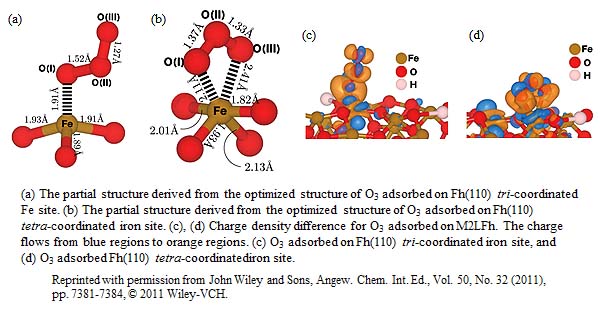
Mesoporous 2-line ferrihydrite (M2LFh), a partially dehydroxylated material with accessible mesopores, can be used as a biocompatible material for eliminating the ozone (O3) in the air at room temperature. The high O3 removal activity of M2LFh is due to the abundantly available unsaturated surface Fe sites with less oxygen packing around them and the presence of isolated FeOx species.
-
pages 15-21
Satoru Kato, Hironobu Ozeki, Hiroshi Yamada, Tomohiko Tagawa, Naoki Takahashi and Hirofumi Shinjoh
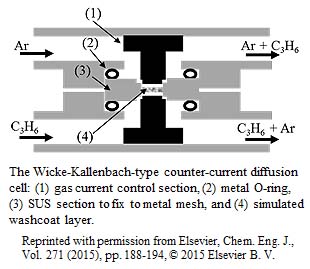
Understanding gas diffusion phenomena in automotive catalysts is necessary for their further development. We developed a method of directly measuring the effective gas diffusivity, developed a measurement cell, and investigated the gas diffusion mechanism. Effective gas diffusion coefficients were measured at 298 K - 673 K for H2, He, CH4, Ne, N2, O2, C3H6, and CO2.
-
4. Electrochemical Automotive Exhaust Purification
 (2,654kB)
(2,654kB)pages 23-33
Yoshiyuki Sakamoto
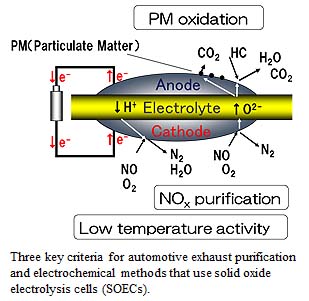
Electrochemical methods using solid oxide electrolysis cells (SOECs), composed of an electrolyte sandwiched between two electrodes, are expected to be one of the next generation of automotive exhaust purification technologies. This paper summarizes the results of research involving an electrochemical method for automotive exhaust purification.
-
pages 35-43
Yoshihiko Itoh
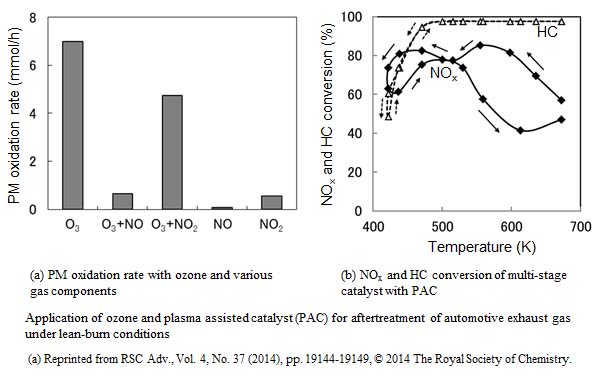
The oxidation of particulate matter (PM) with ozone, and the non-thermal plasma it was produced with, was evaluated as an aftertreatment for diesel engine exhaust. Low temperature PM oxidation was successfully achieved and the results indicate NOx reduction by plasma assisted catalysis (PAC), which confirms that non-thermal plasma is effective for these purposes.
Part II.
Special Review
-
6. Nylon 6-clay Hybrid: From Invention to Practical Use
 (840kB)
(840kB)pages 45-55
Arimitsu Usuki
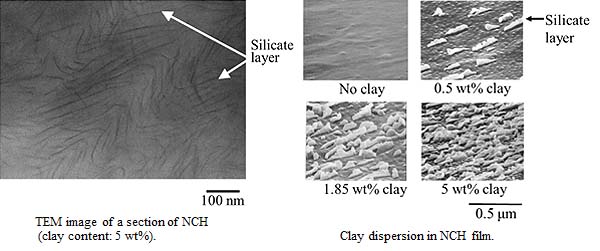
We have dealt with the history of the basic research of nylon 6-clay hybrid (NCH) developed by Toyota Central R&D Labs., Inc. until it was put to practical use as an automotive material. By dividing the stage of research into five stages, we looked back on research and management at each stage.
Research Reports
-
pages 57-66
Minoru Waki, Yoshifumi Maegawa, Norihiro Mizoshita, Takao Tani and Shinji Inagaki
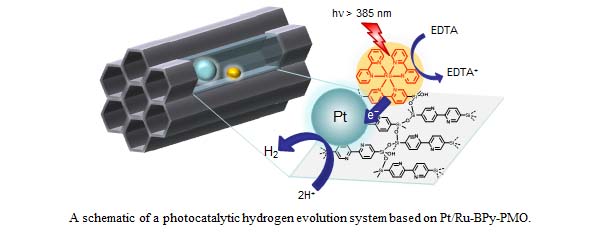
Novel crystal-like mesoporous organosilicas containing three types of pyridyl ligands: divinylpyridine, phenylpyridine, and bipyridine, were prepared from pyridylalkoxysilane precursors. The pyridyl groups of these PMOs can act as metal coordination ligands to incorporate functional metal complexes for heterogeneous catalysis and photocatalytic systems.
-
8. Topology Optimization Method with Vector Field Design Variables
 (3,312kB)
(3,312kB)pages 67-75
Tsuyoshi Nomura, Ercan M. Dede, Tadayoshi Matsumori and Atsushi Kawamoto
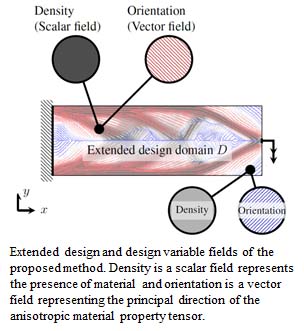
This report presents a topology optimization method capable of simultaneously designing both the morphology of the structure and orientation distribution of an anisotropic material. The proposed method is versatile and flexible enough to solve multiload or multiphysics problems. Singly and multiply loaded stiffness maximization problems are provided as numerical examples and the characteristics of concurrent density and orientation optimization are analyzed.
-
pages 77-85
Nobuhiro Ogihara
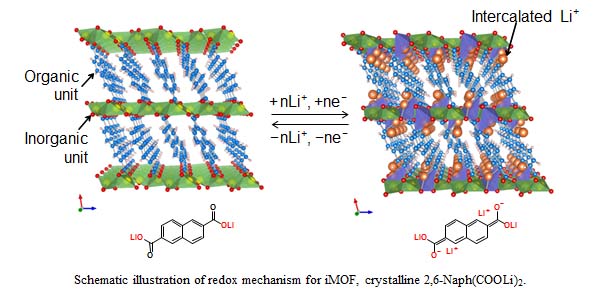
For balance of battery performances and safety, an intercalated metal-organic framework (iMOF), 2,6-naphthalene dicarboxylate dilithium, which has an organic–inorganic layered framework, shows reversible Li intercalation at a flat potential of 0.8 V vs. Li/Li+. The layered framework is maintained during Li intercalation and its volume change is only 0.33%.
